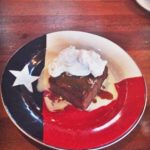My 24th birthday was the second day of our Louisville trip and it was a blast. Not surprisingly, I wanted to go on a distillery tour – but not just any tour – the Buffalo Trace Distillery tour. This is the bourbon tour of bourbon tours, anyone can go on the Jim Beam or Makers Mark tours, but we made sure to call ahead and reserve our spots on the Buffalo Trace “Hard-Hat Tour” (much longer and more in-depth than the typical one-hour, run-of-the-mill tour).
The Buffalo Trace Distillery is located in Frankfort, KY, about an hour away from Louisville. It is one of the longest continuously operating distilleries in the US, here is a quick description from BT’s website:
In Kentucky, buffalo carved a pathway that was followed by America’s early pioneers. On the spot where the buffalo migration route crossed the Kentucky River, we’ve been making legendary bourbon whiskey for over 200 years.
We literally saw everything from the corn, rye and barley being dropped off, to the barrel warehouses. I already had a great appreciation for good bourbon, but now I have an even stronger appreciation for everything that goes into every drop of brown water.
One of the main reasons I wanted to go to Buffalo Trace, is because it’s where Pappy Van Winkle bourbon is made. In my mind, this is the only place that is awesome enough to house such an amazing bourbon – the grounds are like an estate, similar to what I’m sure it feels like to drive up to Augusta National.
One of the trucks dropping off some corn – according to Federal Regulation, Title 27, in order to be considered a bourbon, whiskey must contain at least 51% corn:
“Bourbon whisky” is whisky produced at not exceeding 160° proof from a fermented mash of not less than 51 percent corn, rye, wheat, malted barley, or malted rye grain, respectively, and stored at not more than 125° proof in charred new oak containers.
The corn is mixed with rye, barley, and sometimes wheat (Maker’s Mark and Pappy are “wheated” bourbons), then combined with water (AKA – Mash) to begin the Mashing Process:
To avoid writing a novel, I am leaving a lot out. Once the mash is made, it is transported to gigantic 3-story chambers where the yeast is added to the Mash. Two types of mash are combined, sweet mash and sour mash.
Pappy Van Winkle sweet mash tastes like corn flakes:
That’s Part 1, next up is the actual fermentation process… then the best part, tasting!
– Ryan













Leave a Reply